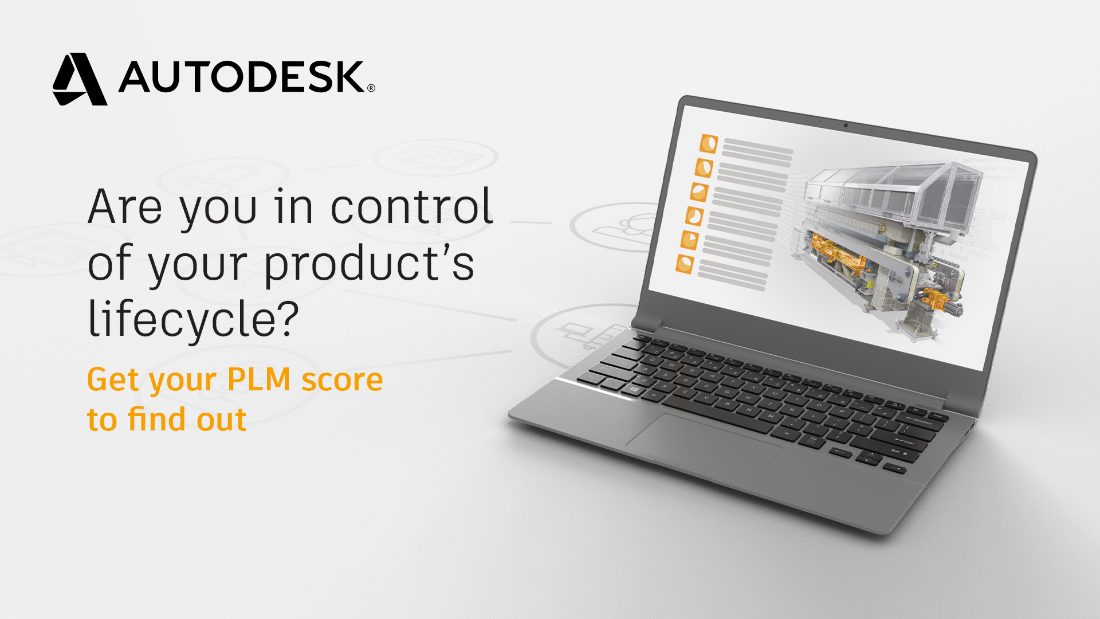& Construction

Integrated BIM tools, including Revit, AutoCAD, and Civil 3D
& Manufacturing

Professional CAD/CAM tools built on Inventor and AutoCAD
5 min read
Product lifecycle management has always been promising. But achieving fully connected data, people, and processes from where you are today may seem daunting. Improving the way your teams manage data and processes, while you know will eventually prove beneficial, seems like a lot of work. The good news is you do not have to fully implement every PLM workflow right away to start seeing impressive results.
To help you get started on this attainable approach to PLM, we have broken down the process of transitioning to PLM into 4 actionable steps that you can take today to get you closer to your goal of fully connected data, people, and processes so you can start experiencing the benefits of PLM right away.
The first step to achieving any business improvement is understanding the ROI and what you stand to gain by doing the work to make the change. You need to have a clear vision of what connected data, people, and processes would mean for your business.
Maybe like Autodesk customer Evatec, you’re looking for a way to win more business and reduce resource consumption. Evatec makes thin film production tools for the semiconductor, optoelectronics and photonics industries. They implemented Autodesk PLM to satisfy increasing customer demand for their tailored solutions, which allowed them to win more business and achieve a faster time to market.
Or perhaps your vision is to improve your business’s operational efficiency overall. Autodesk customer Aclara Technologies is a world-class global supplier of smart infrastructure solutions to more than 780 water, gas, and electric utilities. They implemented Autodesk PLM to streamline their new product introduction processes for global teams, including engineering, operations, and contract manufacturers.
Whatever outcome you are working toward, it is important to have a clear vision for your end goal and how PLM can help you achieve it.

As you can see from the stories about our customers we detail above, there are significant benefits to transitioning to PLM. The right PLM system can manage a lot. Unfortunately, traditional PLM tools require a lot of work on your part before your business can start to see benefits.
It’s essential to find a PLM provider with a modular and scalable solution. This allows you to start simply. You can then scale easily to address your most pressing business needs. You’ll begin seeing the benefits of PLM right away.
You should choose the capabilities you want from a collection of core PLM apps and specialized processes. All these are included at no extra cost. This approach to transitioning to product lifecycle management helps you experience PLM benefits. You won’t have to change everything at once.
Once you have identified a provider that offers a simple, scalable approach to PLM, you will need to identify which PLM capabilities you have to choose from. Which workflows are offered, and which ones are the most important to your business?
Here are the key PLM workflows that we offer and the ones that we have identified as mission-critical when it comes to connecting your data, people, and processes. When evaluating a PLM solution, make sure these are on your must-have list.
With so many easily configurable workflows to choose from, it can be challenging to know where to begin. That’s where understanding your business’s PLM score comes into play.
Your PLM score indicates how well your teams manage data, people, and processes. This helps you identify areas to focus on first. We developed a free PLM assessment tool for you to get your score. You can also identify which areas need immediate attention and which ones can come later.
The tool guides you through a short series of questions. It asks about your role and how your teams manage data, people, and collaboration. Afterward, you will receive a detailed report with your PLM score, results, and resources to help you choose essential capabilities.
Once you complete the assessment, an Autodesk representative will follow up. They will discuss your results and help create a strategic plan. This plan will address the areas that will benefit your business most. You’ll move closer to realizing the benefits of fully connected data, people, and processes.
Following this 4-step process will ensure that getting started with product lifecycle management goes smoothly, allowing you to begin experiencing the benefits of PLM right away, without needing to change everything at once.
We hope you found this information helpful. Before you go, don’t forget to take the quick step to get your PLM score here.
May we collect and use your data?
Learn more about the Third Party Services we use and our Privacy Statement.May we collect and use your data to tailor your experience?
Explore the benefits of a customized experience by managing your privacy settings for this site or visit our Privacy Statement to learn more about your options.